Tony Davies Columns
In the Tony Davies Column, Tony is getting jealous of chromatographers in “Central spectroscopic data systems: why are chromatographers so much better equipped?”. Replicating the power of chromatography data systems for spectroscopic data is not that easy.
In the Tony Davies Column, vast amounts of data and how you handle them are investigated by Tony, and Shane Ellis, Benjamin Balluff and Ron Heeren from the Maastricht MultiModal Molecular Imaging Institute. “Spectroscopic data handling at petabyte scale” shows how one institute is dealing with truly huge amounts of data, both in its collection and in its distribution to scientists for interpretation and analysis. At the same time, the institute has been able to incorporate best practice around the FAIR Data Stewardship of scientific information.In the Tony Davies Column, vast amounts of data and how you handle them are investigated by Tony, and Shane Ellis, Benjamin Balluff and Ron Heeren from the Maastricht MultiModal Molecular Imaging Institute. “Spectroscopic data handling at petabyte scale” shows how one institute is dealing with truly huge amounts of data, both in its collection and in its distribution to scientists for interpretation and analysis. At the same time, the institute has been able to incorporate best practice around the FAIR Data Stewardship of scientific information.
In the Tony Davies Column, Tony looks at “Raman imaging of difficult surfaces”. He looks at a number of different approaches to dealing with uneven samples, as well as reviewing instrumental improvements that have made Raman imaging a viable analytical and diagnostic tool.
In the Tony Davies Column, Tony describes “A new approach to identifying unknown trace level analytes by tandem mass spectrometry without reference spectroscopic database support: CSI:FingerID”. This allows for tandem mass spectrometry data to be used to identify unknown analytes from common molecular structure databases where reference spectroscopic data is unavailable.
In the Tony Davies Column, we learn about “Automated detection of counterfeit drugs using multimodal spectroscopy and advanced web-based software platforms”. With the increase in trafficking of counterfeit medicines and other products, there is a need for definitive results from an on-site analyser useable by customs officers. The German authorities have commissioned the development of a multi-modal, transportable inspection system, including intelligent data processing and evaluation, for fast spectroscopic recognition of illicit drugs and counterfeit medicines. This is described in the column.
Tony Davies, Peter Lampen, Stephen Heller and Evan Bolton report on the future of the spectroscopic data collected as part of the EuroSpec programme. Its long-term preservation is being guaranteed through the PubChem Project of the US National Library of Medicine.
Tony Davies and Mohan Cashyap are concerned about your NMR data. When an article starts “On 10 October 2014 the impossible happened”, you will want to take note! Following the withdrawal of Agilent from the NMR business, Tony and Mohan consider three solutions to ensuring your NMR data is available now and into the future. If you have an NMR of any make, you will want to read this. Do remember that you can comment on the web version of the article.
Following on from the two recent articles on how the Cloud may be impacting the availability of scientific software delivery for spectroscopists, this article looks at what the wider commercial spectroscopy software providers have been doing in this area.
This is Tony’s last column for Spectroscopy Europe. It is explores an idea that he has been developing for over 30 years, although as Tony points out the story starts around 3500 years ago.
The Tony Davies column is a joint effort by Tony (A.N.) Davies, Mohan Cashyap, Bob Lancashire and Bob Hanson on “Exploring distributed, multi-server 1H NMR prediction”. This is the second part of the column’s investigation into the use of cloud-based services in the analytical arena. It describes a web page linking services from multiple sites on both sides of the Atlantic to deliver molecular structure drawing, 3D structure representation, name to structure conversion and display of data generated by linking chemical structures to 1H NMR prediction. May I reiterate Tony and Mohan’s plea for information on such cloud-based solutions, whether commercial or not. These can be sent to me (ian@impublications.com) and I will pass them on.
Tony (A.M.C.) Davies continues on his last furlong, this time considering “Classification and identity testing”. As well as some interesting insights into the analytical lab in the late 1960s, he gives his opinion on various chemometric techniques and on identity testing, as well as thoughts on future development.
In the Tony Davies Column, Tony (A.N.) Davies and Mohan Cashyap introduce us to the potential for Cloud Computing in the lab. This is the first of a two-part contribution, and, for the second part, they need your help with your experiences of Cloud Computing in your lab or organisation.
Tony (A.M.C.) Davies looks at Multiple Linear Regression (MLR) this issue, as well as expressing his opinions about Principal Components Regression (PCR) and Partial Least-Squares (PLS).
Tony Davies explains “Terahertz Spectroscopy” and describes some new and interesting applications
Tony (A.M.C.) continues down the last furlong of his series of Tony Davies Column articles. This issue, he considers principal component analysis (PCA). Using research recently published in the Journal of Near Infrared Spectroscopy, he explains that PCA is a very useful tool but it will not solve all our problems. Two old articles on PCA, including Tony’s concept of the “Data Cake” have been added to the website, are referenced in Tony’s article and can be freely downloaded by readers.
Robert Lancashire reports from the Chemical Information Division (CINF) of the American Chemical Society meeting at their recent 246th ACS National Meeting and Exposition.
Now that Tony understands wavelets, he is in the perfect position to explain them to the rest of us! Whilst wavelet compression is an interesting and popular method, it is worth confirming that there is a real benefit in using them compared to FT compression, especially for near infrared spectra where there are few regions of flat baseline.
Tony (A.N.) Davies is getting excited by GHz NMR. These new high fields offer tantalising new areas of research but at a cost that generally requires their purchase by Government-funded centres of excellence. He argues that continued funding of such projects is essential, especially in difficult economic times.
Tony (A.M.C.) Davies starts a review of the chemometric ideas that have most excited him over the last 30 years. In this column, he looks at the use of Fourier transformation for data compression. FT can also provide the side benefit of reducing high-frequency noise.
Tony (A.N.) and Henk-Jan van Manen introduce us to the COmprehensive Analytical Science and Technology (COAST) initiative, a funding effort to counteract what was seen by industry and academia as a decline in fundamental analytical research in the Netherlands and the associated problems around producing high quality researchers and technicians.


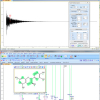
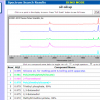
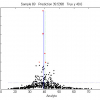

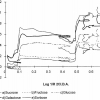

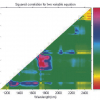

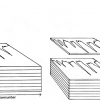

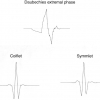
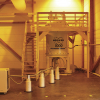
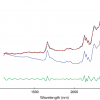

 The Tony Davies Column covers a wide range of topics of interest to spectroscopists in both industry and academe, with an emphasis on data handling and processing. Read more about the
The Tony Davies Column covers a wide range of topics of interest to spectroscopists in both industry and academe, with an emphasis on data handling and processing. Read more about the